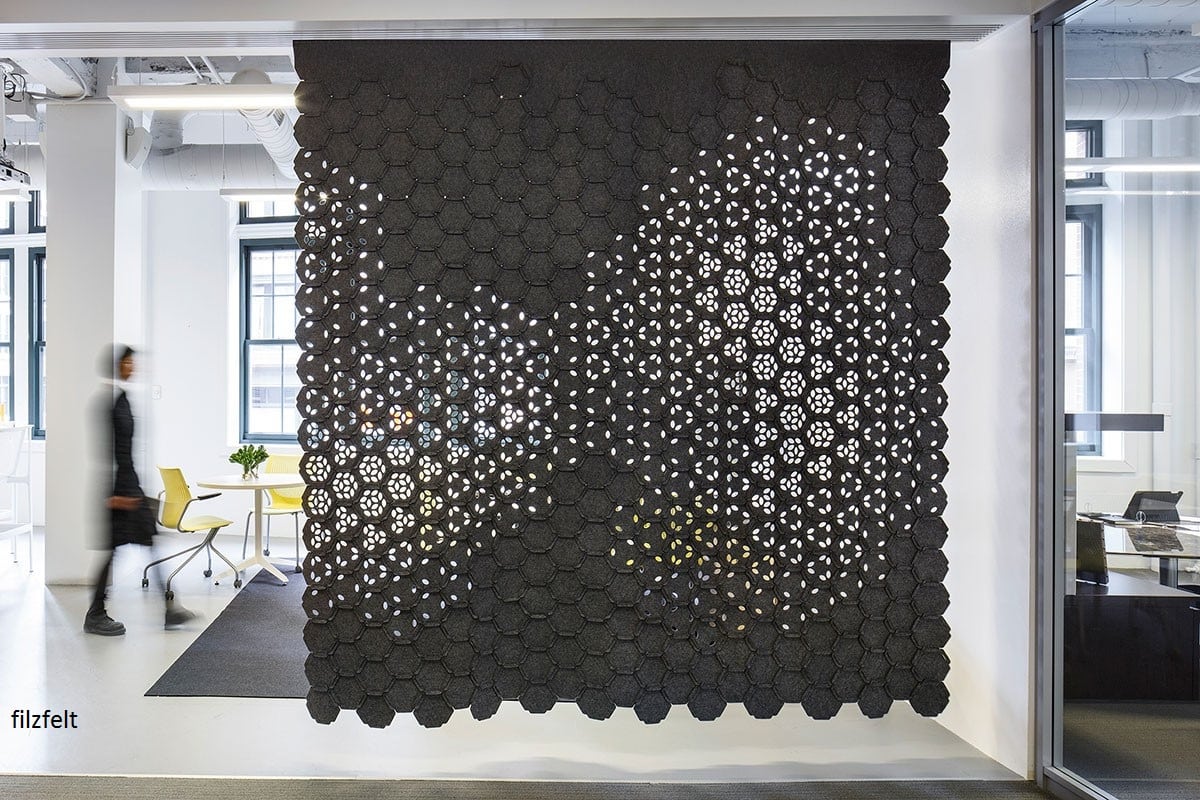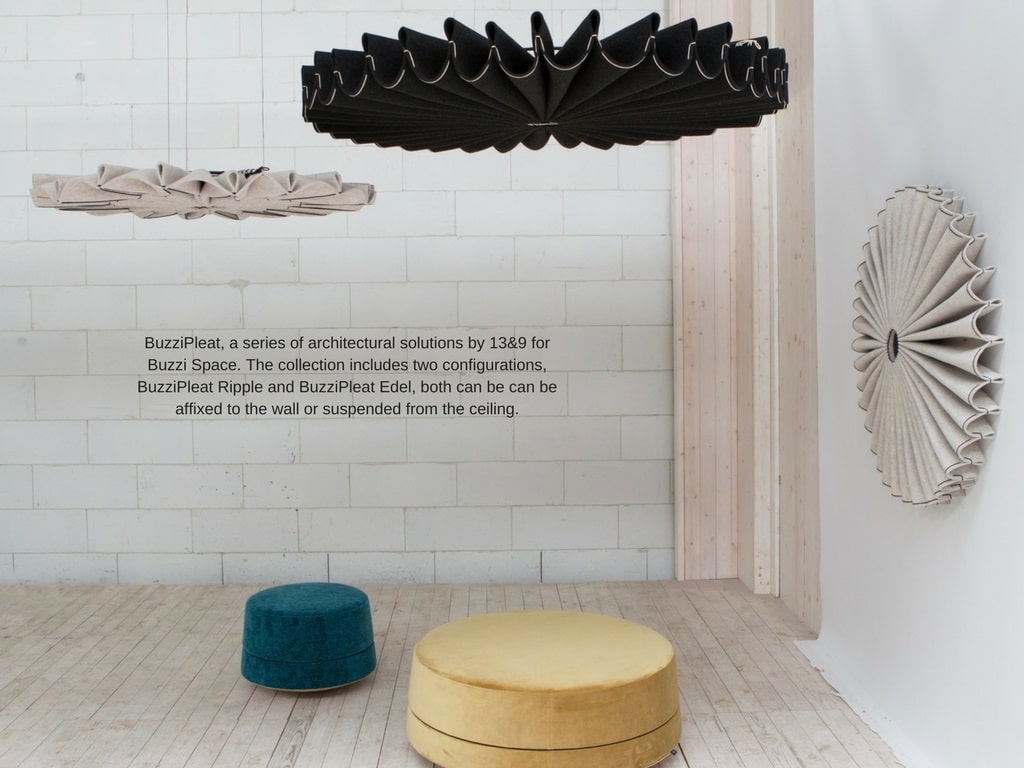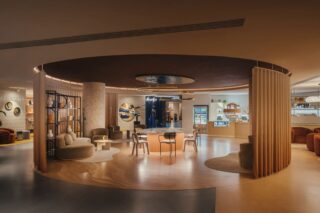Daniel Verlooven, Global Acoustics Ambassador at the now 10-year-old acoustic furnishings company Buzzispace chaired the NeoCon panel Demystifying Acoustics. The discussion broke down the complexities of how sound functions differently according to space while emphasizing the importance of acoustics as an essential consideration for architects, designers and knowledge workers.
As Verlooven explained, “We have moved from Homo sapiens to Homo interruptus.” Hunched over a computer, seemingly concentrated, one is constantly shifting gears and following a new train of thought due to the distraction of an overheard conversation or distant tick. Wired like our cavemen ancestors, we retain a need for “curiosity, privacy and territory,” the presenter explained. We need our personal space, but we tend to be attentive and alert to what is happening around us. Hence, we’re just not wired to multi-task. The constant background hum of a computer or coffee maker results in an unconscious fixation which not only causes poor concentration but contributes to a long list of disorders from headaches to anxiety and depression.
This means that if we’re going to work in open or flexible spaces exposed to multiple activities and machines, the acoustics are an essential consideration. Yet, the difference in sounds, their frequencies and the way that sound-absorbing objects or displays are used is too often miscalculated. Verlooven went on to give the example of people who place a strip of felt on the wall or overburden a space with tons of acoustic panels and carpet for aesthetic purposes. Depending on the volume of the space, a small amount of furnishing will only cancel out high frequencies, like consonants “so, people will just hear each other mumbling.” Moreover, low frequency sounds like mumbling travel far, so even if people on the other side of the room don’t know what one is saying, they still hear the sounds.
Another misconception is the function of noise reduction coefficients or NRC ratings. An NRC indicates how much sound an object can absorb, not cancel. The NRC is on a scale of 0 to 1; 0 means no sound absorption and 1 equals complete absorption. The BuzziSpace Ambassador gave the low-down to the audience, proclaiming that “if a sound-absorbing furnishing claims an NRC rating above 1, it’s phony.”
The bottom line is that there isn’t one end-all solution to acoustic conundrums; each space needs to be considered specifically and attentively with expertise. For example, the reverberations must be measured. BuzziSpace already thought that out with their RT60 app that proposes different sound-absorbing products in response to a given measurement.
“There is still a lot of knowledge to be shared. There is growing awareness, especially with the current need for wellness, but [architecture professionals] are still often masking the need with a trend,” Verlooven reminded us. If a collaborative space is developed for interaction and discussion, then the space actually needs to be planned with acoustics as the main objective.













